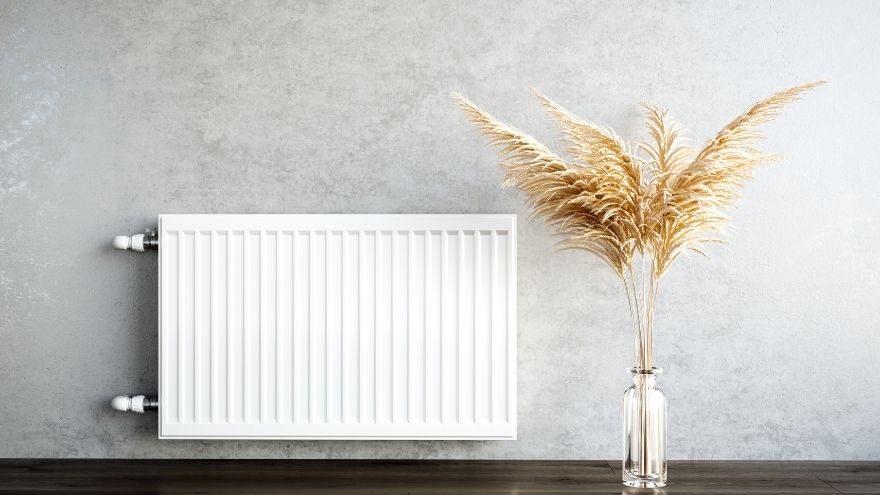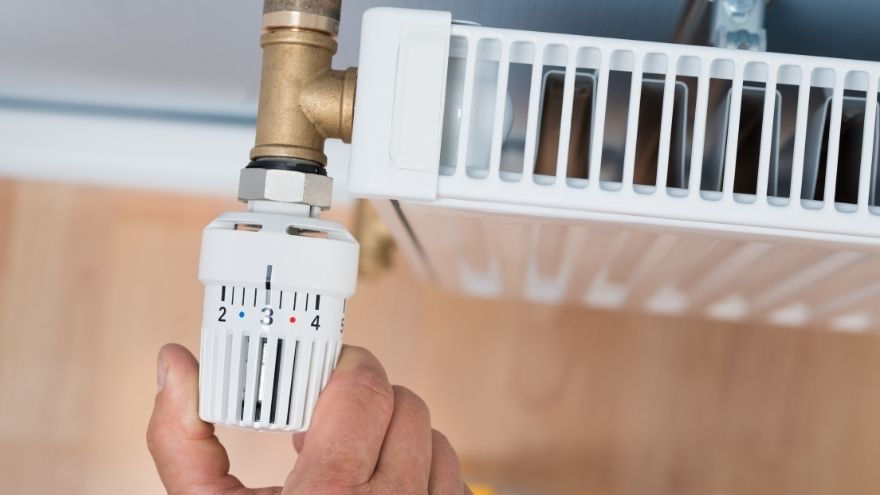Radiators are a basic element of many heating systems. They come in various variants, and the choice between them affects not only the efficiency of the installation, but also the aesthetics of the interior. Consumer needs in this area are constantly changing, so it is worth being aware of the parameters that your customers will pay attention to when purchasing radiators. In our guide, we will tell you how to choose the best solutions for them!

From this article you will learn:
- what types of radiators are available on the market,
- what criteria will your customers use when choosing radiators,
- how to help a customer choose a radiator.
Check out the radiators at the Onninen wholesaler
Types of room radiators
Radiators available on the market can be classified according to several criteria. They are divided, among others, into: in terms of the material they are made of, construction, method of connection and heat transfer, and appearance. From the customer's perspective, the first two divisions will be most important.
In terms of the materials used, the following can be distinguished:
Aluminum radiators
Products made of light and smooth material. In order to protect them against corrosion, plastic elements or silicon and copper additions are used in places where they come into contact with other metals. Aluminum radiators conduct heat well and allow the user to easily control their operation.
Steel radiators
Models characterized by great diversity in terms of aesthetics. One of their most important advantages is easy control of work. Thanks to their relatively small water capacity, they heat up quickly and release heat evenly.
Cast iron radiators
This solution can still be found in many Polish homes. They are heavy and have a rough surface, which makes them difficult to clean. Modern structures are produced in various shapes and colors, they are stylish and look good in elegant interiors.
For customers interested in replacing old cast iron radiators, we recommend aluminum models. It is much easier to adapt them to the existing installation than steel variants.
Due to their construction, radiators are divided into:
Plate radiators
Plate radiators are also called panel radiators. They consist of one, two or three steel plates connected in rows, although aluminum is also used to make them. They are characterized by a smooth surface with vertical embossing. They have vertical and horizontal water channels, but also in the form of a spiral. They are adapted mainly to central heating installations, but also where water is the heat carrier. Panel structures are also found in oil and infrared heaters. The advantage of this type of radiators is a short heating time, but they have a lower heat capacity than cast iron ones.

Sectional radiators
These products are sometimes called finned radiators. They are composed of a different number of identical elements which, in the case of open systems, can be connected and disconnected depending on needs. Unlike plate models, they are most often made of aluminum alloys. Steel variants are not suitable for free zooming in and out.
Convector heaters
The basic element of convector heaters are copper pipes with a radiator in aluminum sheet posts (increasing the heat exchange surface). The air moving from below rises upwards when heated. 95% of the heat is transferred by convection, it flows naturally (gravity) or using a fan. Channel heaters usually also operate on the principle of convection, placed in the floor, usually along windows and doors as well as glazed parts of walls and equipped with special air ducts.
Check out the radiators at the Onninen wholesaler
Ladder radiators
These are radiators consisting of tubes and shaped like ladders. They are usually made of steel and installed in bathrooms. You can add an electric heater to them, which will provide additional heating, regardless of the heating system.
Decorative radiators
This is an interesting alternative to classic ladder radiators. Nowadays, consumers are increasingly looking for models that will not only provide them with the right amount of heat, but will also fit attractively into the room. Decorative radiators can take various designer shapes or appear as smooth, minimalist panels. They are used both in bathrooms and in other rooms of the house.
Radiators – which ones to choose?
The types of radiators mentioned above will differ in both energy efficiency and the method of heat transfer. These are the two most important parameters that your customers will use in the decision-making process. For this reason, it is worth considering what solutions to provide them in your store or wholesaler.
Radiator power
The heating power given in watts should fully cover the heat demand in a given room. It may also be higher. In order to accurately determine the required radiator power, the surface area of the room and the quality of the building's external insulation should be taken into account. To put it simply, it can be assumed that:
- a very well insulated facility needs 50-70 W/m 2 ,
- a facility with average insulation requires 70-120 W/m 2 ,
- a poorly insulated facility needs more than 120 W/m 2 .
It is worth warning customers about the negative effects of improper selection of radiators. Errors in calculations may reduce thermal comfort in interiors. Investors should therefore carefully plan the location of radiators and determine their power already at the construction stage.
The way a radiator transfers heat
 As we mentioned in the description of individual types of radiators, they differ in how they transmit heat. The most commonly used are those in which heat is transferred by water. Convection and infrared radiation systems are interesting solutions. In the former, heating occurs through the circulation of air flowing through the radiator. The second one involves the transfer of heat emitted in the form of electromagnetic waves. The way radiators emit heat should be adapted to the individual needs of customers.
As we mentioned in the description of individual types of radiators, they differ in how they transmit heat. The most commonly used are those in which heat is transferred by water. Convection and infrared radiation systems are interesting solutions. In the former, heating occurs through the circulation of air flowing through the radiator. The second one involves the transfer of heat emitted in the form of electromagnetic waves. The way radiators emit heat should be adapted to the individual needs of customers.
How to help a customer choose radiators?
To help your customer choose radiators for their home, draw their attention to the power of the devices and their method of heat transfer. As you already know, both the size of the room and the quality of the building's insulation will have the greatest impact on these parameters. It is also worth taking into account the nature of the interior, to which the design of the radiators and the material from which they will be made should be adapted. In places with high humidity, models made of corrosion-resistant materials, such as steel, will work well. In large and high rooms, aluminum models will be useful as they heat up much faster.
Check out the radiators at the Onninen wholesaler
It is also worth paying customers' attention to other features of radiators that will ensure safe and comfortable operation of the heating system, such as:
- adaptation to a specific heat source and heating water temperature,
- stable structure,
- no sharp edges, dangerous e.g. for children,
- easy to keep clean,
- possibility of adjusting thermal efficiency,
- ease of installation,
- resistance to damage.
At the Onninen wholesaler you will find a wide range of radiators
Check out radiators that will meet all the requirements of your customers. Available models include:
- TERMA LIMA bathroom radiator ,
- INSTALPROJEKT AMBRA ladder radiator ,
- PURMO TINOS decorative radiator ,
- REGULUS copper-aluminum radiator ,
- PURMO CV11 radiator ,
- ONNLINE bathroom radiator ,
- ONNLINE steel panel radiator ,
- INSTALPROJEKT ASTRO ladder radiator .
Check out our assortment and choose the best radiators for your store!